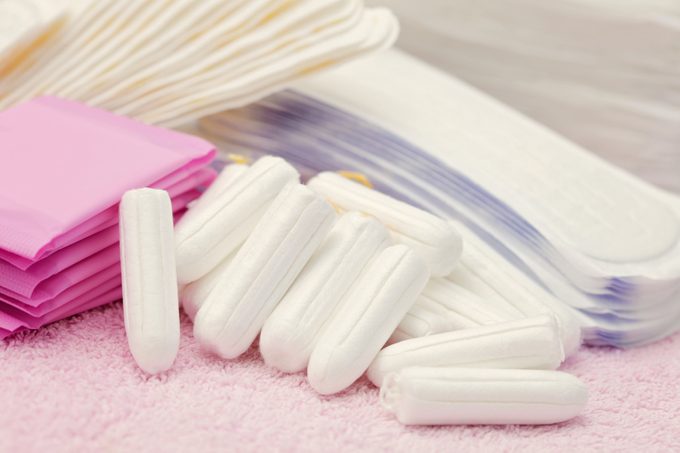Everything You Need to Know About the Abolished ‘Tampon Tax’
The federal government has recently eliminated sales tax on feminine hygiene products such as tampons. Here's what to know.

Menstruating just got a little bit easier for Canadian women, thanks to a May 28 (2015) announcement that the federal government will eliminate sales tax (HST/GST) on feminine hygiene products, such as tampons, menstrual pads and menstrual cups. I know, ‘What took them so long?’
While you rejoice over your newfound windfall (effective July 1), bone up on the facts of the so-called “tampon tax.”
Why the tampon tax was considered unfair
While essential everyday items such as groceries and children’s clothes are exempt from HST/GST, premenstrual products are not. This essentially meant menstrual products were lumped in the same group as cosmetic products or other ‘luxury’ goods.
Critics argued that the tampon tax placed an unfair burden on women and menstruating trans people because menstrual products are not a luxury; we need them to function in our everyday lives.
Items that were deemed more essential than your tampons
Cocktail cherries, wedding cakes and human sperm are all exempt from HST/GST. Even a bride with a sweet tooth would argue that a box of tampons is more essential to her big day than a fondant-covered masterpiece. Viagra is also exempt. Go figure.
Who’s responsible for getting the tax scrapped?
Groups have been protesting the tampon tax since 1982, when menstrual products were excluded from a list of goods that were exempt from sales tax. At the time, women reportedly mailed bloody tampons to the then-finance minister’s office in protest.
These are the players who pushed for change this year:
• Jill Piebiak. The young feminist activist brought the issue back into the spotlight in February when she launched a change.org campaign petitioning the minister of national revenue to abolish the tampon tax. More than 74,000 people signed it.
• NDP MP Irene Mathyssen. The London-Fanshawe MP most recently introduced private members bill C-282 to exempt feminine hygiene products from the Excise Tax Act. (NDP MP Judy Wasylycia-Leis introduced the bill in 2004.)
• Conservative MP Michelle Rempel tabled a motion on May 28 to pass the bill.
This issue crossed party lines
Who knew periods would unite the House? A motion to table bill C-282 was unanimously passed in early May. And while NDP MPs championed the bill, the Canadian Press reports that several Conservative female MPs put pressure on colleagues to support the bill by threatening to boycott a vote on May 11.
Provinces will follow suit
Since the government won’t be charging sales tax on feminine hygiene products, the provinces will cut their portions of the GST/HST as well. (Some provinces were already rebating their portion of the tax.)
What you’ve been paying
While you might not have noticed the sales tax on your tampons and pads, the cost can add up. Canadian women paid more than $36 million in HST/GST on feminine hygiene products in 2014, according to Statistics Canada.
What you’ll save
Sales tax differs across provinces. As an Ontarian who spends about $10 per month for a 36-pack of tampons, I can expect to save roughly $15.60 next year. That’s far from a down payment on my dream home, but it’s more money to sock away in my RRSP. Or maybe I’ll blow it all on cocktail cherries.
Canada has set an example
Since the May 28 announcement, pressure has been growing for the British and Australian governments to follow Canada and nix their tampon tax as well.




